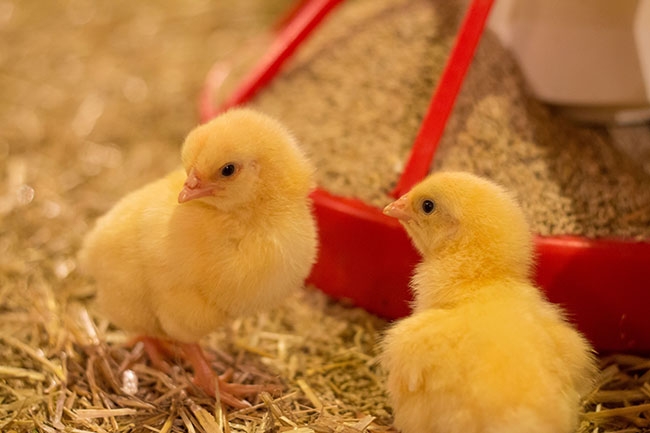
Feeding broiler breeders
By Lilian Schaer for LRIC
Features Broilers HealthIn search of alternate strategies.
 In addition to evaluating different feeding schedules in simulated commercial conditions, a study at the University of Guelph is also looking at providing additional feed in the form of fibre.
In addition to evaluating different feeding schedules in simulated commercial conditions, a study at the University of Guelph is also looking at providing additional feed in the form of fibre. Modern commercial broiler breeders need to be feed restricted in order to control their growth rate and prevent obesity, lameness and reproductive problems. Although the birds are fed above their maintenance requirements, they exhibit behavioural signs of chronic hunger.
In North America, feed restriction is managed either through daily quantitative feed restriction or non-daily feeding schedules where birds receive no feed on one or more non-consecutive days per week and receive a greater quantity of feed on the remaining days. There is currently very limited research into the welfare implications of these feeding practices.
Dr. Stephanie Torrey at the University of Guelph is studying alternative feeding strategies for broiler breeders. In addition to evaluating different feeding schedules, her work is also looking at providing additional feed in the form of fibre. This would allow the birds to receive a larger quantity of feed without growing.
At three weeks of age, 1,680 Ross 308 females were put into groups of 70 pullets per pen at a stocking density of 7.7 birds per square metre and eight centimetres of feeder space each. Pullets were fed one of four isocaloric dietary treatments from three to 22 weeks of age: daily commercial diet (control), daily alternative diet, 4/3 feeding frequency of a commercial diet or a graduated commercial diet with varying on-feed days per week. The alternative diet included 40 per cent soybean hulls and one to five per cent calcium propionate, which increased over time. Growth rate and flock uniformity were measured at weeks three, six, 10, 14 and 17 through a random subsample of 25 pullets per pen. All birds were weighed at 22 weeks and assigned a maturity score. A different subsample of 10 pullets per pen was scored every other week for feather coverage (as an indirect measure of feather pecking), and foot lesion and hock burn prevalence. Litter moisture was determined weekly; feeding motivation was also tracked and blood samples were taken.
Initial results are showing that pullets on a 4/3 feeding frequency were smaller and less mature. Their energy use was less efficient, but they were better able to adjust to their feeding regime and anticipate feeding days more accurately.
Overall, project results to date suggest that non-daily feeding schedules used with commercial stocking densities slow feather loss and reduce body weight but do not increase flock uniformity. This work will lead to an assessment of the welfare implications of restricted feeding.
This article is provided by Livestock Research Innovation Corporation as part of LRIC’s ongoing efforts to monitor and report on Canadian livestock research developments and outcomes.
Print this page